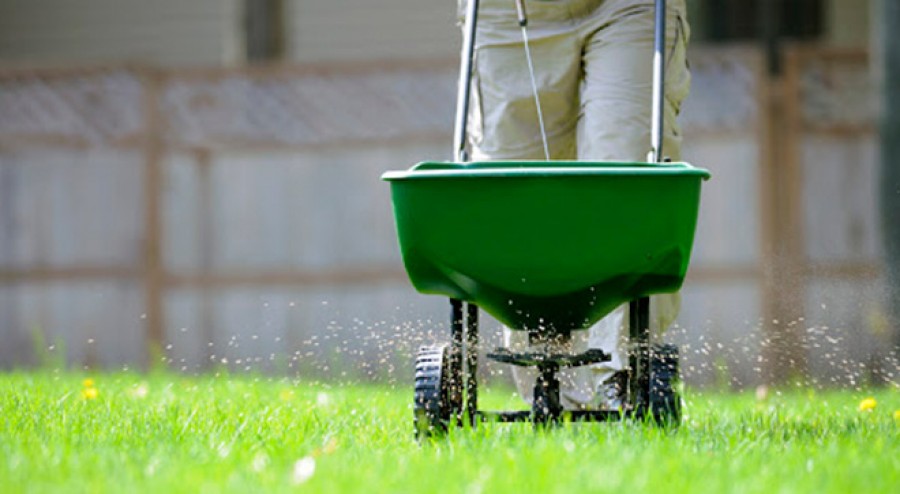When should you Fertilise your lawn?

If you decide to only feed your lawn once – this is best done during late spring or early summer.
Spring
Fertilising your lawn ensures that it has all the nutrients it needs to be healthy and beautiful.
It is also a time to address weeds. When your soil gets below a certain temperature, usually about 14 degrees, your lawn goes into dormancy and the growing stops or slows down considerably. Most weeds however, have adapted and enjoy the cooler soil conditions so they continue to sprout and grow. Weeds are also much more obvious over the cooler months as you are not having to regularly mow your lawn so they get the chance to stand out from the crowd. Because of these reasons, it is crucial to fertilise after your weeds have been treated, and while your lawn is growing. You want the grass to be absorbing the nutrients and not the weeds!
The best time to treat your lawn for weeds is towards the end of winter or start of spring, as your lawn is less likely to be affected by the herbicides as it is still dormant and the weeds are more susceptible as they are still growing.
After the weeds have been treated, it is time to fertilise your lawn. To get the most out of the fertiliser, it is best to wait until your lawn is growing again before applying. Waiting until after your first or second spring mow is a good way to ensure your lawn is out of dormancy and growing again. This is the time your lawn is ready for a feed! A high nitrogen NPK fertiliser is recommended, and always be sure to irrigate after application. To keep a healthy looking lawn year round, it is recommended you apply fertiliser every 8-10 weeks from October to April.
Summer
After vigorous growth during spring your lawn needs another application of complete fertiliser. Regular mowing and watering will ensure your lawn looks the best.
Autumn & Winter
The optimum time to do this is two applications of fertiliser; one in March and one in April/May (before the weather gets cold). A fertiliser high in potassium, increasing plant cell health and structure, will give your lawn protection going into the cold winter months. Mow a little higher to give your lawn protection against frosts.
Top Tip – The nitrogen in fertilisers can burn the lawn and leave unsightly yellow marks. Take care to water immediately after applying to ensure the fertiliser is watered in and absorbed into the soil before it can burn the blades.


